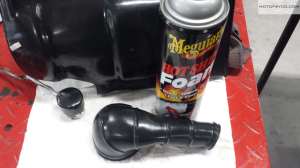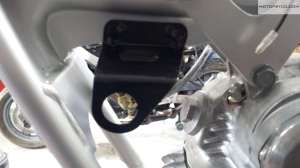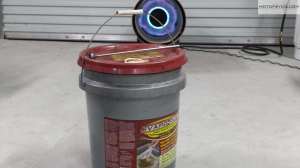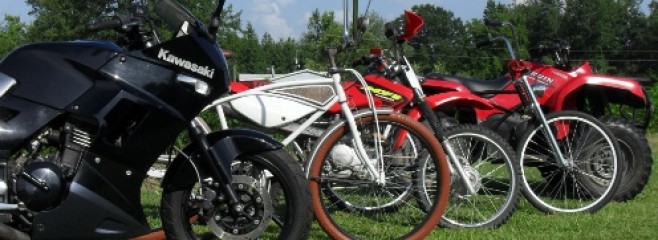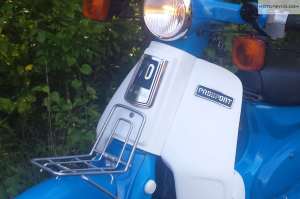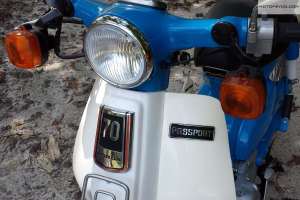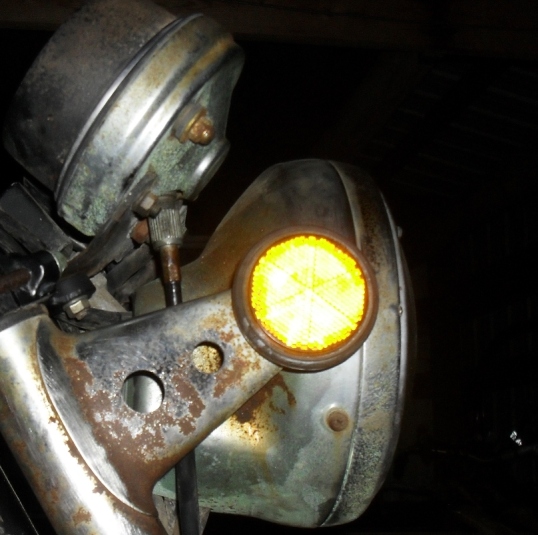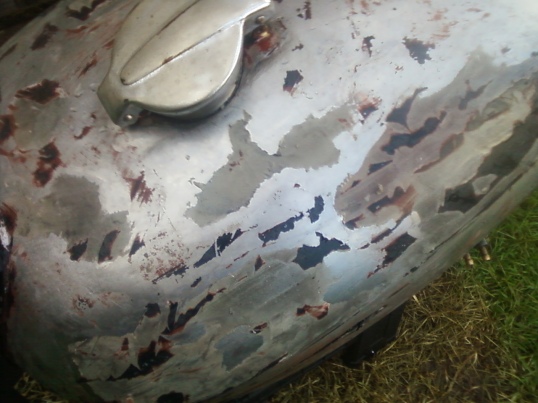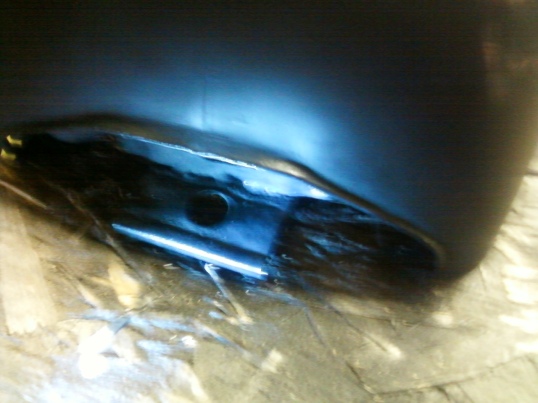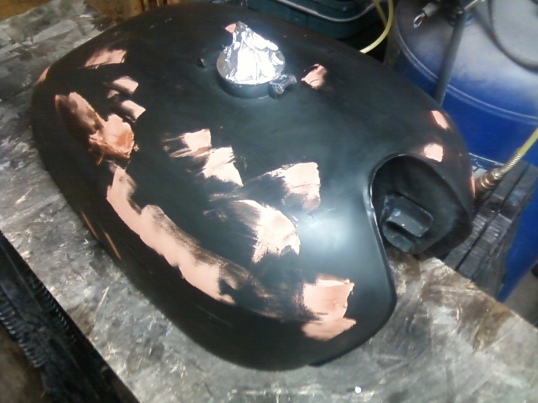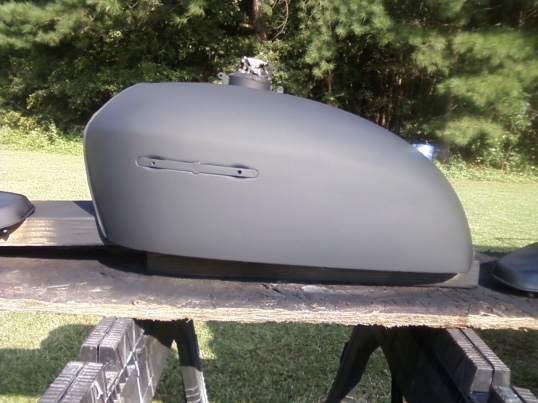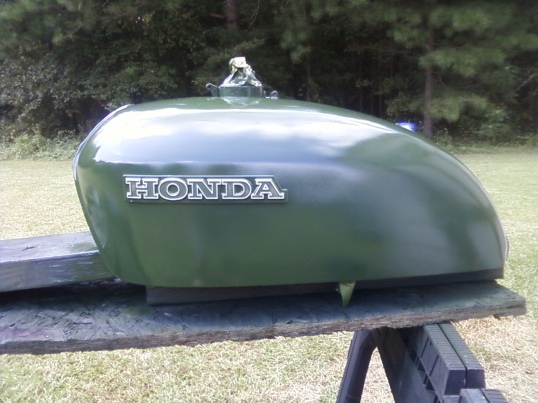Some of us just have to do things the hard way, it’s in our blood and it will not be denied. Take me for example, while by no means wealthy in money I could probably buy any new motorcycle I wanted just sign the dotted line & add another automatic draft to my checking account & ride. But even the new retro bikes don’t have the pull on my soul that the old ones do, they aren’t part of my memories, & they don’t need my love to get back on the road. I don’t know about you, but for me the turning of the wrenches, watching dial gauges & degree wheels, the smell of parts washer fluid & the massaging & painting of old sheet metal bring me just as much pleasure a actually riding the finished product. When I finish one project, or sometimes even before I am constantly scanning Craigslist, Ebay, the local trader papers, & the internet message boards to find the next one.
Sometimes I do very irrational things that create far too much work for myself even by my own masochistic, self flagellating standards. This is the story of how I modified & then destroyed a fuel tank for my CB650 Scrambler project, & then had to fix another one.
Let’s start from the beginning, first there was my junk auction CB650C with this very holey tank.

As you can see there wasn’t much point in trying to fix that one so I used it for target practice & threw it away. Initially my plan was to turn this bike into a shiny polished cafe racer style custom with a big ’70s tank & some clip-ons, so I ordered up a 1974 CB750 tank from Ebay & set it on the bike just to see how it would look. Of course it wouldn’t work with the stock seat so I broke out the sawzall & cut 2 inches from the front of the seat. At this point I was still planning to cut the rear sub-frame off & put in a tail loop to support a proper cafe racer seat with a bum stop, because I had the Ninja for me & Mrs. Psyco to ride around on two up. Here’s a shot of the initial mock up.

old 750 tank mockup
By the time the above picture was taken fate had intervened in two distinctive ways. First we’ve had one of the wettest, nastiest, stormiest, summers on record. The dirt road that I use to get from my hole down in the swamp out to civilization, has been an almost constant quagmire because we have not been without rain long enough for it to dry completely up. This is not an environment conducive to the cafe racer style of motorcycle as your only bike. The second factor was the sale of the Minimum Ninja, I really wasn’t crazy about selling it, but the gentlemen who bought it from me was like a kid going, “please Santa, I’ll take great care of it I promise,” so I finally gave in & let him have it. To his credit he does keep it much cleaner than I ever did. But now I had to get something rolling & fast, preferably something with two up capacity that would roll down a dirt or gravel road just as good as a paved one. Decide to do a flat green rat bike that require minimum cleaning.
I had already made a new rear tank mount at this time by bending the CB750 mount down & brazing in a sheet metal angle the the proper size hole in it.
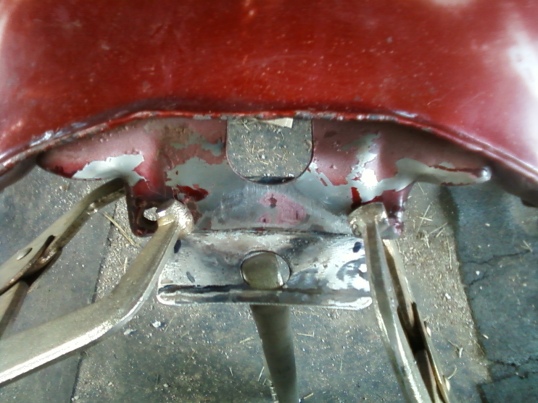
cb750 to cb650 rear tank mount clamped
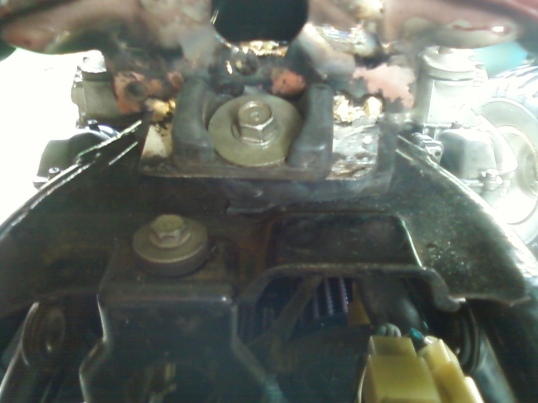
My ugly brazing
The problem was that at the time I paid no attention the the seat to tank relation, something that would come back to haunt me later. After I changed my mind about the direction of this project but before really fitting everything together I decided to go ahead & change the color, but since I was doing a “rat bike” style build not to fix any dents or chips & just spray can paint it.
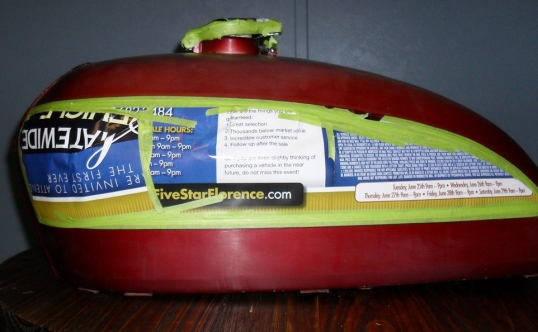
tank number 1 taped up
So I taped off the graphics & cap being careful to trim the tape around the nicks and chips hoping that it would look like the new color was original & spray bombed it with what I thought was a flat dark olive color
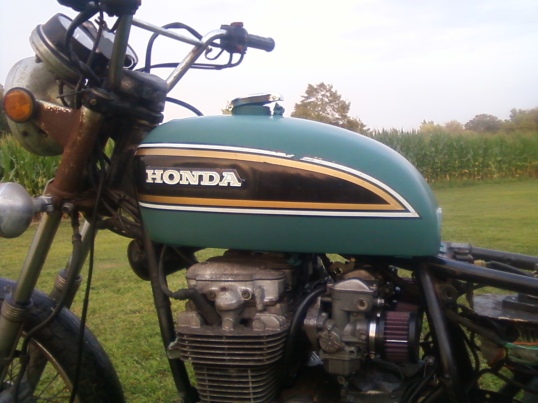
much lighter than I was expecting:(
About this time, I purchased a “skull pile” stencil from Airsick Stencils & decided to play around with it some, so I popped the tank off & taped it up following the instructions on the Airsick website for using these reversed stencils they sell, & sprayed my main color Createx Wicked Gold.
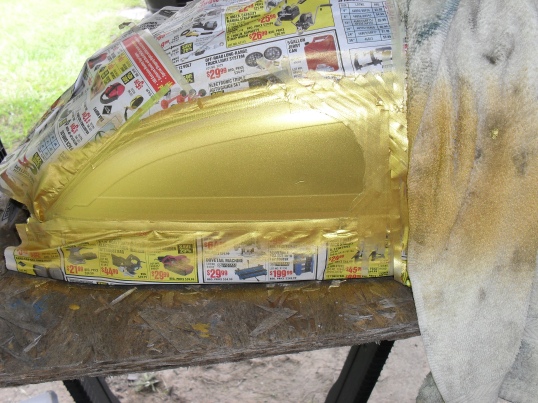
This color required a lot more thinner than the other Createx colors I’ve used in the past
After spraying the color I then put the stencil back in place and turned my air pressure down a little bit and sprayed in some opaque black to create the details.
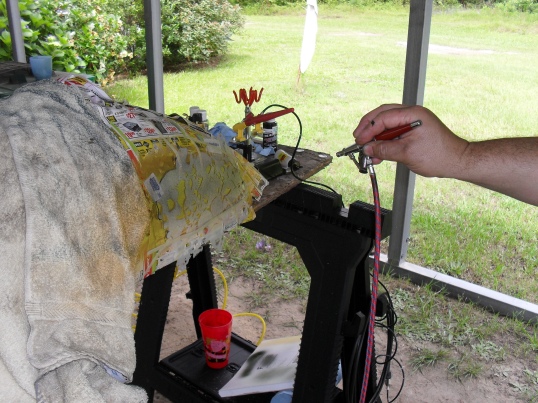
laying in the skulls
Here’s what it looks like when you take the stencil off.
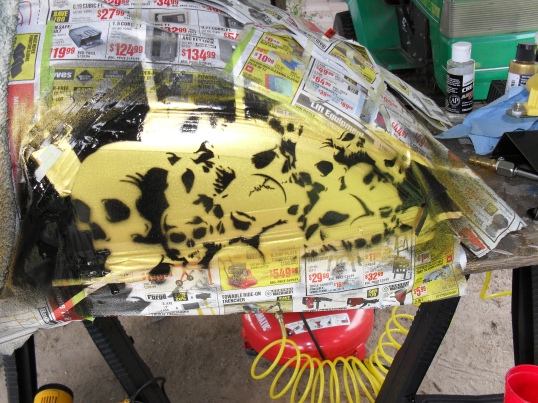
Just In case you were wanting to know the airbrush is a Paasche VL & yes I am very happy with it.
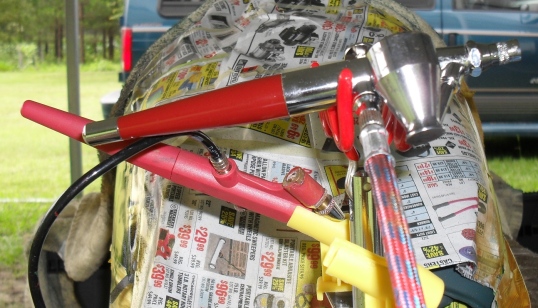
After finishing up and giving the paint a few minutes to set up I peeled the tape off.
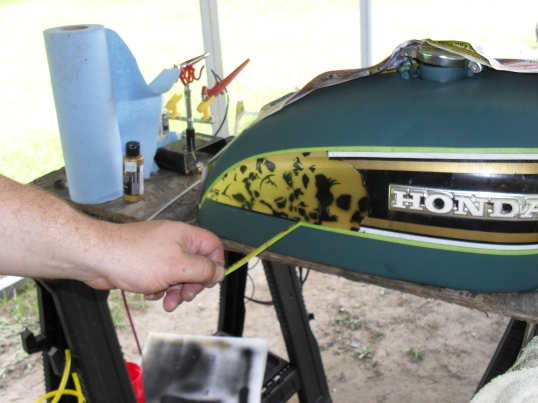
peeling back the mask
If you try this at home just remember that most commercially available airbrush paints are designed for fabric use & require heat to set them and make them permanent, so go over the surface with a hair dryer or hot air gun & get it good and warm if you don’t want your paint washing off later.
Most people go back over these skull piles & fill in little details with the airbrush & some freehand stencils. Me I cheated a little bit by doing my detail work with a black extra fine point Sharpie, before spraying on the clear coat.
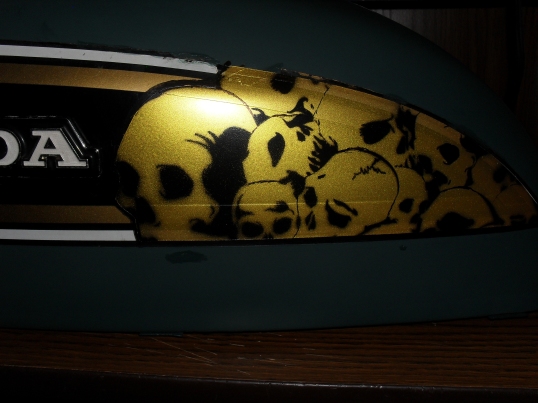
It looked decent enough for a rat bike I thought
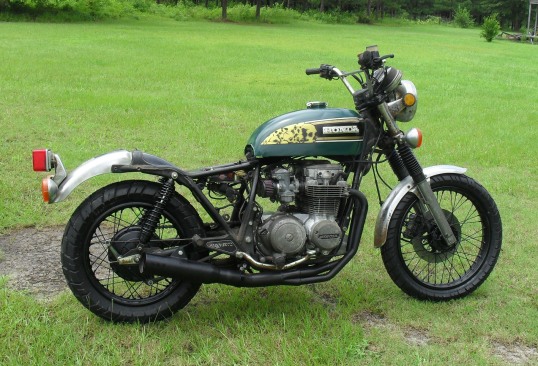
airbrushed tank on cb650 scrambler
It’s kind of a shame that I destroyed this tank while attempting to correct the big gap between the bottom of the tank & the top of the seat. Oh well if you’re gonna cook an omelet you gotta break a few eggs. I’ll come back in a day or three and tell you the rest of the story.
